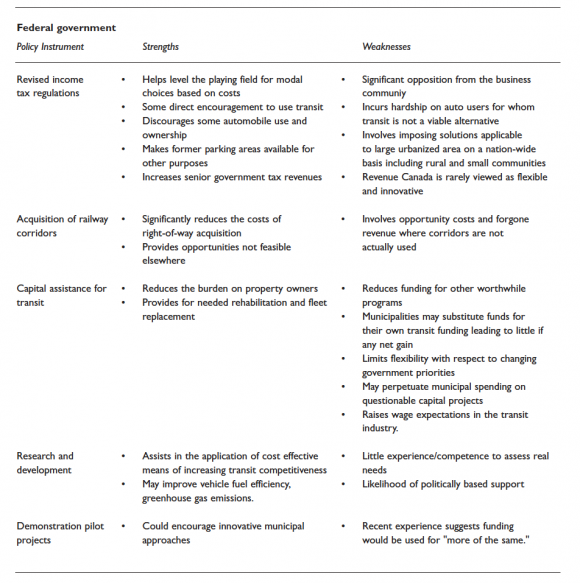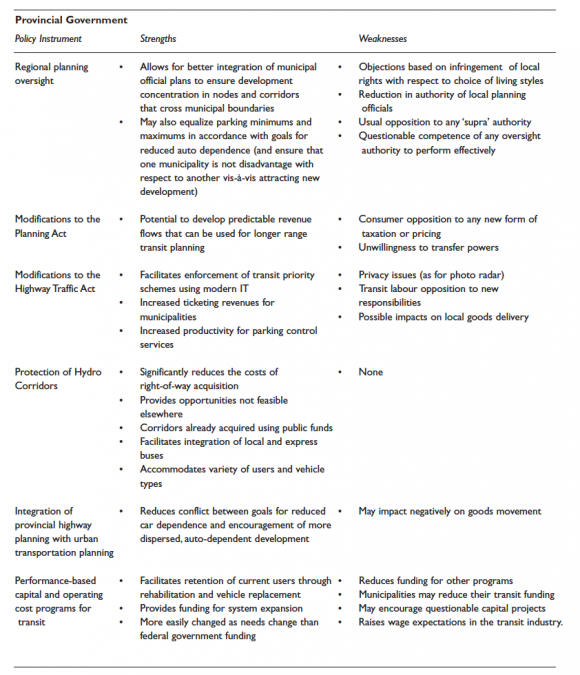Although the various strategies and their components listed in Table 6.1 can contribute, in varying degrees, to achieving smart growth, there are obviously constituencies that would be adversely affected. Also, some strategies imply legislative changes that would not be easily accomplished or which may be impractical for other reasons.
Table 8.1 Strengths and Weaknesses of Policy Instruments and Strategies
Table 8.1 attempts to compare the strengths and weaknesses of these strategies with a view to, at least, highlighting weaknesses that derive from the some of the barriers treated in the previous section. In general terms, the weaknesses of some of the more important strategies relate to:
- negative impacts on road users (both costs and inconvenience) who constitute, by far, the largest segment of the urban transportation market;
- individual municipal aspirations for growth and development;
- reluctance of governments at any level to relinquish control and powers;
- opposition to new taxes and charges of any type;
- constraints imposed on individual travel decisions;
- flexibility to alter funding mechanism as needs and priorities change;
- funding available for other programs diverted to transportation;
- incentives created by matching fund programs to spend on ill-advised projects.



